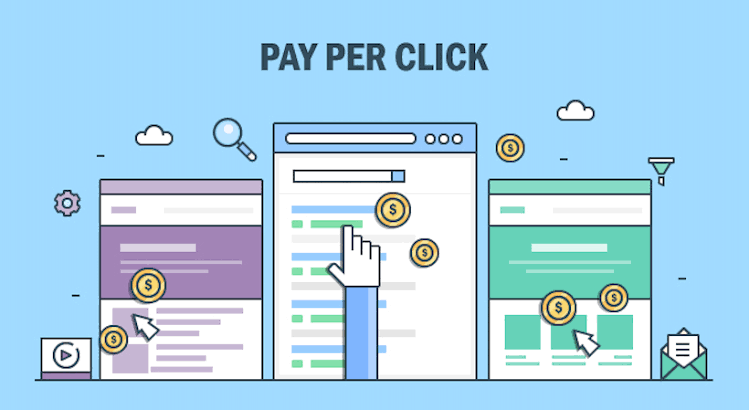Know everything about Pay Per click Advertising
In digital marketing landscape Pay-Per-Click (PPC) advertising stands out as one of most effective methods for driving targeted traffic to your website. PPC campaigns allow businesses to bid for ad placements in search engine's sponsored links. This happens when someone searches for keywords related to their business. This guide explores the essentials of creating effective PPC campaigns. Ensuring you get most out of your advertising budget.
Understanding PPC Advertising
PPC advertising is model where advertisers pay fee each time one of their ads is clicked. Essentially it's way of buying visits to your site. Rather than attempting to "earn" those visits organically, you pay for them. The most popular platform for PPC is Google Ads. There are other platforms like Bing Ads. Facebook Ads and LinkedIn Ads are also utilized.
Benefits of PPC Advertising
PPC advertising offers several advantages. Firstly it provides immediate results. Unlike SEO, which can take months to show significant results. PPC ads can drive traffic to your site as soon as they go live. Secondly PPC allows for precise targeting. You can target users based on keywords, demographics location and even time of day. Lastly, PPC campaigns are highly measurable. Enabling you to track and analyze performance metrics to optimize your campaigns.
Setting Clear Goals
Before launching a PPC campaign, it is crucial to define clear goals. These goals will guide your strategy and help measure success. Common PPC campaign goals include increasing website traffic, generating leads, boosting sales, or promoting brand awareness. Having specific, measurable, achievable, relevant, and time-bound (SMART) goals will ensure your campaigns are focused and effective.
Conducting Keyword Research
Keyword research is the foundation of any successful PPC campaign. It involves identifying the keywords and phrases your target audience uses when searching for products or services similar to yours. Use tools like Google Keyword Planner, SEMrush, or Ahrefs to find relevant keywords with good search volume and manageable competition. Focus on a mix of short-tail and long-tail keywords to capture both broad and specific search queries.
Creating Compelling Ad Copy
The ad copy is what will attract potential customers to click on your ad. Therefore, it needs to be compelling and relevant to the user's search query. Here are some tips for creating effective ad copy:
Headline: The headline is the first thing users see. Make it attention-grabbing and relevant to the keyword.
Description: The description should provide more details about your offer and include a call-to-action (CTA). Highlight unique selling points (USPs) and benefits to entice users to click.
URL: The display URL should be clean and relevant to the ad content. It often helps to include the keyword in the URL path.
Ad Extensions: Use ad extensions to provide additional information and improve the visibility of your ad. Common ad extensions include site link extensions, call extensions, and location extensions.
Designing Effective Landing Pages
A well-designed landing page is crucial for converting clicks into customers. Ensure that your landing page is relevant to the ad copy and provides a seamless user experience. Key elements of an effective landing page include:
Relevance: The landing page content should align with the ad copy and keyword. Ensure that users find what they expect when they click on your ad.
Simplicity: Keep the design simple and uncluttered. Use clear headlines, concise copy, and prominent CTAs.
Mobile-Friendly: Ensure that your landing page is optimized for mobile devices, as a significant portion of traffic comes from mobile users.
Load Speed: A slow-loading page can lead to high bounce rates. Optimize images, use a reliable hosting provider, and minimize unnecessary scripts to improve load speed.
Tracking and Analyzing Performance
Monitoring and analyzing the performance of your PPC campaigns is essential for ongoing optimization. Key performance indicators (KPIs) to track include:
Click-Through Rate (CTR): The ratio of clicks to impressions. A high CTR indicates that your ad copy is resonating with users.
Conversion Rate: The percentage of users who take the desired action (e.g., making a purchase, filling out a form) after clicking on your ad.
Cost Per Click (CPC): The amount you pay for each click. Monitor CPC to ensure you are staying within your budget.
Return on Ad Spend (ROAS): The revenue generated for every dollar spent on ads. A positive ROAS indicates that your campaign is profitable.
Tools like Google Analytics and the analytics provided by your PPC platform can provide detailed insights into campaign performance. Use this data to identify what is working and what needs improvement.
Optimizing Your Campaigns
Optimization is an ongoing process that involves making adjustments to improve performance. Here are some strategies for optimizing your PPC campaigns:
A/B Testing: Test different ad variations to see which performs better. Experiment with different headlines, descriptions, and CTAs.
Bid Adjustments: Adjust your bids based on performance. Increase bids for high-performing keywords and decrease bids for underperforming ones.
Negative Keywords: Identify and add negative keywords to prevent your ads from showing for irrelevant searches. This helps improve the quality of your traffic and reduces wasted spend.
Ad Schedule: Analyze the times and days when your ads perform best and adjust your ad schedule accordingly. This ensures your ads are shown when your target audience is most active.
Geotargeting: If your business operates in specific regions, use geotargeting to focus your ads on users in those areas. This helps you reach a more relevant audience.
Utilizing Remarketing
Remarketing is a powerful PPC strategy that targets users who have previously visited your website but did not convert. By showing these users tailored ads as they browse other websites or social media platforms, you can re-engage them and encourage them to return and complete the desired action. Remarketing can significantly improve conversion rates and ROI.
